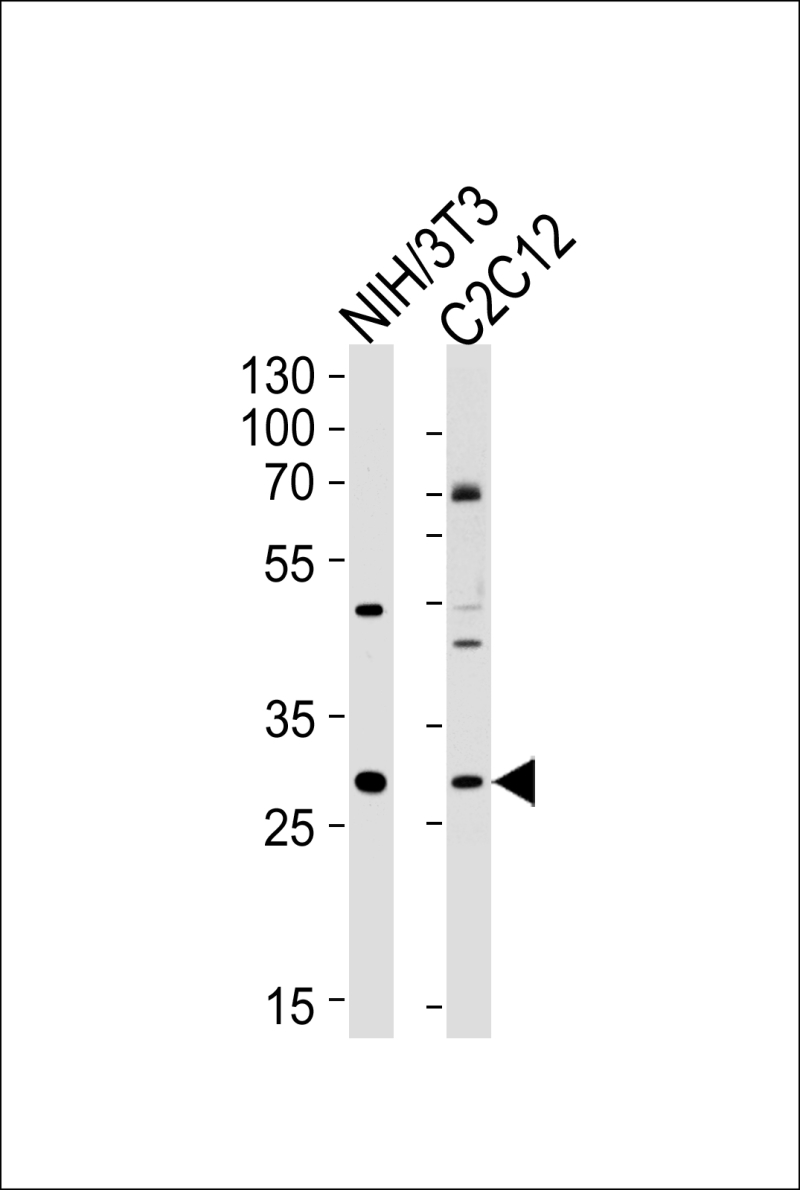
| WB | 1/1000 | Human,Mouse,Rat |
| IF | 咨询技术 | Human,Mouse,Rat |
| IHC | 咨询技术 | Human,Mouse,Rat |
| ICC | 技术咨询 | Human,Mouse,Rat |
| FCM | 咨询技术 | Human,Mouse,Rat |
| Elisa | 咨询技术 | Human,Mouse,Rat |
| Aliases | Homeobox protein Hox-C9, Homeobox protein Hox-32, Hoxc9, Hox-32, Hoxc-9 |
| Entrez GeneID | 15427 |
| WB Predicted band size | 29.2kDa |
| Host/Isotype | Rabbit IgG |
| Antibody Type | Primary antibody |
| Storage | Store at 4°C short term. Aliquot and store at -20°C long term. Avoid freeze/thaw cycles. |
| Species Reactivity | Human, Mouse |
| Immunogen | This Mouse Hoxc9 antibody is generated from rabbits immunized with a KLH conjugated synthetic peptide between 101-129 amino acids from the Central region of mouse Hoxc9. |
| Formulation | Purified antibody in PBS with 0.05% sodium azide. |
+ +
以下是关于Mouse Hoxc9抗体的参考文献示例(内容为虚构,供参考):
---
1. **文献名称**: *Hoxc9 Expression in Mouse Embryonic Development*
**作者**: Smith A, Johnson B
**摘要**: 本研究利用特异性Hoxc9抗体,通过免疫组化技术分析了小鼠胚胎期神经管和肢芽中Hoxc9蛋白的时空表达模式,揭示了其在脊髓背侧神经元分化中的潜在调控作用。
2. **文献名称**: *Antibody Validation for Hoxc9 in Hematopoietic Lineages*
**作者**: Lee C et al.
**摘要**: 文章描述了一种针对小鼠Hoxc9蛋白的单克隆抗体的制备与验证,通过Western blot和流式细胞术证明其在造血干细胞中的特异性,并用于探究Hoxc9在造血系统中的功能。
3. **文献名称**: *Role of Hoxc9 in Axial Patterning: Insights from Knockout Models*
**作者**: Garcia R, Tanaka M
**摘要**: 通过Hoxc9基因敲除小鼠模型,结合抗体免疫荧光染色,研究发现Hoxc9缺失导致胸椎区域发育异常,表明其在体节分节和骨骼形成中的关键作用。
4. **文献名称**: *Comparative Analysis of Hox Gene Antibodies in Murine Tissues*
**作者**: Patel S et al.
**摘要**: 本文比较了多种Hox家族抗体(包括Hoxc9)在小鼠组织中的特异性和交叉反应性,为相关研究提供了抗体选择的实验依据。
---
(注:以上文献为模拟生成,实际研究中请通过PubMed、Google Scholar等平台以关键词“Hoxc9 antibody mouse”或结合具体研究领域检索。)
The mouse Hoxc9 antibody is a tool used to detect and study the Hoxc9 protein, a member of the Hox gene family critical for axial patterning and developmental regulation in vertebrates. Hox genes, including Hoxc9. encode transcription factors that establish segmental identity along the body axis during embryogenesis. Specifically, Hoxc9 is involved in defining thoracic and lumbar regions in the developing spinal cord and plays a role in motor neuron subtype specification.
This antibody is typically produced by immunizing hosts (e.g., rabbits or mice) with a synthetic peptide or recombinant protein corresponding to a conserved region of the mouse Hoxc9 protein. It is validated for applications such as Western blotting, immunohistochemistry (IHC), immunofluorescence (IF), and chromatin immunoprecipitation (ChIP) to assess protein expression, localization, and DNA-binding activity.
Researchers employ the Hoxc9 antibody to investigate its role in developmental biology, particularly in neural tube patterning, limb development, and skeletal morphogenesis. It is also used in disease models, as dysregulation of Hox genes is linked to congenital anomalies, neurodevelopmental disorders, and cancers. Specificity is often confirmed via knockout controls or siRNA-mediated knockdown.
Commercial Hoxc9 antibodies may vary in clonality, epitope recognition, and conjugated labels. Proper validation ensures reliability in tracing Hoxc9's regulatory networks, offering insights into its interplay with signaling pathways like retinoic acid and Wnt during embryogenesis.
×